Keeping a stockpile of food supplies on hand for emergencies is part and parcel of being a prepper. All sorts of events could happen, be they natural disasters or man-made catastrophes, they could cut off supplies and commerce in your area, or just make it impossible for you to reach them.
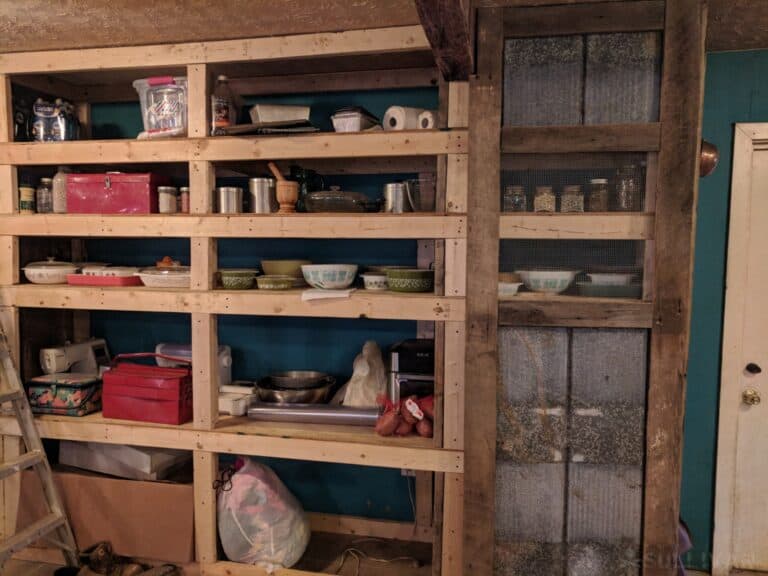
DIY pantry shelves with various items stockpiled
When that occurs, you had better have what you need to eat on hand, and be able to prepare it.
But there is a world of difference between stockpiling a little 3-day or 1-week supply and getting ready for a truly long-term crisis that could last many months or even a year or longer.
Even if you aren’t getting ready for a long-term situation, keeping your food fresh for a long period of time is a lot harder than you might think.
You need to pick the right foods and do the right things if you want your food to last. To help you do just that I’m bringing you a guide to keeping your long-term food stash safe and edible.
Pick the Right Foods
Before we go any further, understand that your job in this regard will be a lot easier if you start off with the right foods. Every food has vastly different characteristics affecting its suitability for long-term storage.
Even the same kind of food made or packaged by a different manufacturer might have a vastly different ingredient list, type of packaging, and special preparation that can make it more or less suitable.
Picking the right foods for the task will increase efficiency and also greatly reduce the chances that your food will spoil while in storage.
Sometimes this is easier said than done, as certain fresh, whole foods might have an extraordinary long shelf life while some heavily processed and factory-packaged foods won’t last nearly as long as you think.
If you’re preparing a stash of food capable of lasting several months or even a year, or you just want a smaller stash that does not require constant rotation, review the following factors and assess your choices with a critical eye.
Inherently Long Life
Some foods just last a lot longer than others. For instance, dry beans are one of the longest-lasting essentials you can possibly buy, and they are capable of keeping for at least 5 years in storage inside the proper container and in the right conditions.
Other super long-life staples are things like rolled oats, pasta, white rice, and wheat berries. These foods also have a great cross-section of nutrients- protein, vitamins, and minerals.
On the other end of the spectrum, raw meat that is not refrigerated or preserved in some other way is going to spoil and rot into a nasty mess within a few days no matter what you put it in.
Factory-canned meat like Spam can last at least 2 years, easily. These are examples on the extreme ends of the spectrum, but I think you get my meaning.
If you’re going to include any foods in your stash that only last for a week or two tops, you had better be rotating and eating, discarding, or donating that food week in and week out or it will never go the distance.
Shelf-Stable
Shelf-stable foods are what we want for our emergency food supply. Shelf-stable foods are those that will keep just fine if properly prepared and packaged at approximately room temperature.
This means they don’t require constant refrigeration or freezing, and they don’t require constant high temperatures to keep germs at bay.
Like the term suggests, they do just fine sitting right there on the shelf in your pantry or storage room
Preserved or Factory Sealed if Possible
As I mentioned above, some whole, fresh foods do fine in long-term storage but most don’t. Say what you want about eating clean and organic, but modern preservatives do a lot too, well, preserve food!
Another element of preparation that helps to keep food fresher longer is factory sealing.
Whatever their other shortcomings and flaws, modern factory settings have the technology base and specialized equipment to safely prepare, package, and seal food against spoilage in basically sterile conditions.
Compared to canning and preserving food yourself, at least using most methods, you’ll get far better shelf life out of factory-prepared and preserved food.
There are plenty of exceptions, of course, and we will talk about some of them but if you want your food to go really long-term keep that in mind.
Use the Right Packaging
Whether you are preparing and packing your own food for storage, repackaging bulk foods or just storing smaller individual factory packages in a more convenient container, it is critical that you use proper containers for the job.
One of the single most common causes of spoilage during long-term storage is packaging failure. This can allow air, moisture, and pests to get at your food and if that happens it is game over.

corn and dried meat inside airtight sealed bags
Airtight is a Must
Oxygen is the enemy of your food. Oxygen can facilitate the life cycle of bacteria and other microorganisms, in addition to directly degrading your food.
Any container that you choose for storing long-term food should be airtight if you want it to last.
Note this is something that is difficult to verify. Many containers have very tight-fitting lids that may snap in place with a satisfying little pop, but not be airtight in the end.
It pays to do your homework and take good care of your containers if you want them to maintain a good seal.
Note that some foods, particularly those with higher moisture content, might do worse in an airtight container if they are not specially treated prior to storage.
Whole grains, nuts, and other foods that are kept in an airtight container might start to accumulate moisture that can do just as much harm as air over time.
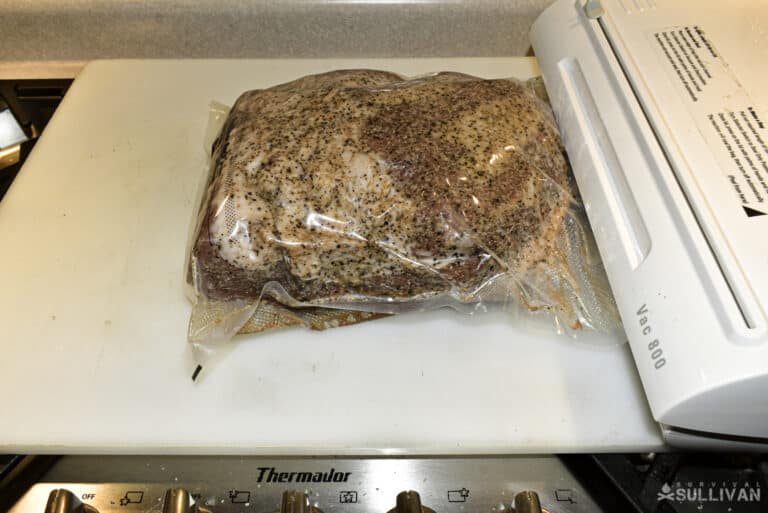
Vacuum sealing a salted pork shoulder
Vacuum-Seal When You Can
For long-term storage, vacuum sealing is a prepper’s best friend.
As you might expect from the name, vacuum ceiling pulls all of the air and other gasses out of the package before permanently sealing it shut. This is an excellent way to extend the shelf life of virtually every food.
Many foods come from the store vacuum sealed already, so they are ready to go in your pantry or on the shelf, but it is possible to purchase your own vacuum sealer and associated bags or other containers.

This technology works wonderfully in conjunction with mylar bags which are oxygen and moisture barriers by design.
All you need to do is insert your food into the bag, hook it up to the machine and activate it for the prescribed amount of time. It’s just that easy.
Also, adapters are available for using vacuum sealers with mason jars and other common containers, and those might be worthwhile depending on your overall food storage plan.
Pest-Resistant
If possible, keep your food in a pest-resistant package, or place packaged food inside a larger, pest-resistant container.
If pests get access to your food, it is pretty much ruined except in rare circumstances. Rodents are filthy and can spread dangerous germs to whatever they touch.
Insects will happily live in, eat and multiply within your food given half a chance. If caught early, the food might be salvageable but it’s usually not.
Pest control at the storage site and the immediate surroundings is always best but you have to assume that at least some will get in one way or another.
When that happens, the packaging of your food (or the container those packages are stored in) might be the only protection.
Insects cannot penetrate plastic or anything harder, but they can easily slip through the tiniest of little crevices and may defeat fabric bags and the like. See the above section on good-fitting lids.
Rodents and other small mammals are another matter. Sharp incisors and powerful jaws mean they will handily gnaw through virtually any plastic or fabric, and only metal or glass is likely to deter them.
Remember: you can disinfect a container that is still intact but once the container is breached your food is probably as good as ruined. We’ll have more to say on pest prevention in a later section.
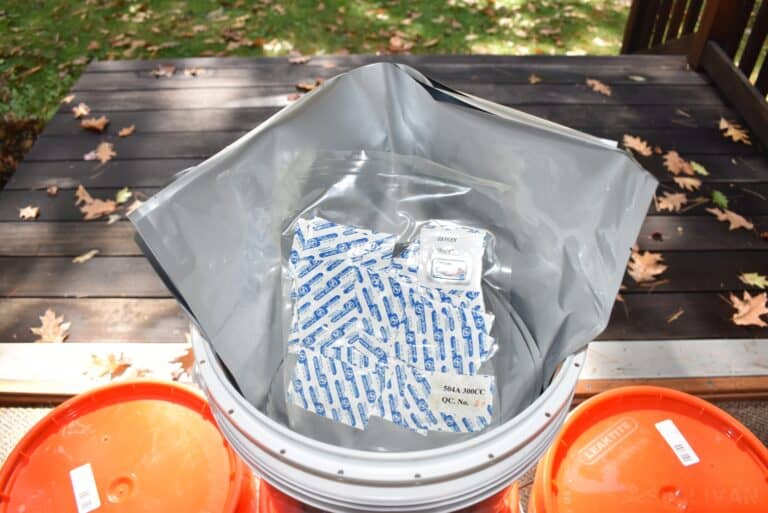
oxygen absorbers inside Mylar bag
Include Oxygen Absorbers or Desiccant Packs as Needed
When packaging your food, especially if you don’t have access to a vacuum sealer, consider including oxygen absorbers or desiccant packs. These little devices are often thought to be synonymous, but they aren’t.
Oxygen absorbers do exactly what their name says; they absorb oxygen, doing so via a chemical reaction.
This is a great way to get the most out of airtight containers that you are unable to vacuum seal.
Simply toss the appropriately sized oxygen absorber in with your food and the next time you go to open it you should notice a distinct pop. That’s because all the oxygen has been pulled out of the container after you closed it!
Desiccant packs, also known as moisture absorbers, do exactly that: they absorb moisture from the air inside the package.
They are needed with some foods to help prevent mold and fungus from forming. Not strictly necessary for all foods or all packages, they can likewise be very helpful.
If you are serious about long-term food storage goals it is in your best interest to order a sizable quantity of both because you’ll have cause to use them. Ordered in bulk online, they are highly affordable.
Freeze-Dry for Ultimate Shelf Life
Freeze-dried foods are sometimes seen as the ultimate choice for long-term storage.
By sublimating the moisture out of frozen foods before sealing them in airtight packaging, a freeze-dryer can yield a 25-year shelf life (or even longer!) for all kinds of common foods- meat, veggies, fruits, dairy, desserts, and even whole prepared meals.
Freeze-dried foods can sometimes be eaten as-is, or easily reconstituted with water. They usually taste a lot better than their texture would suggest!
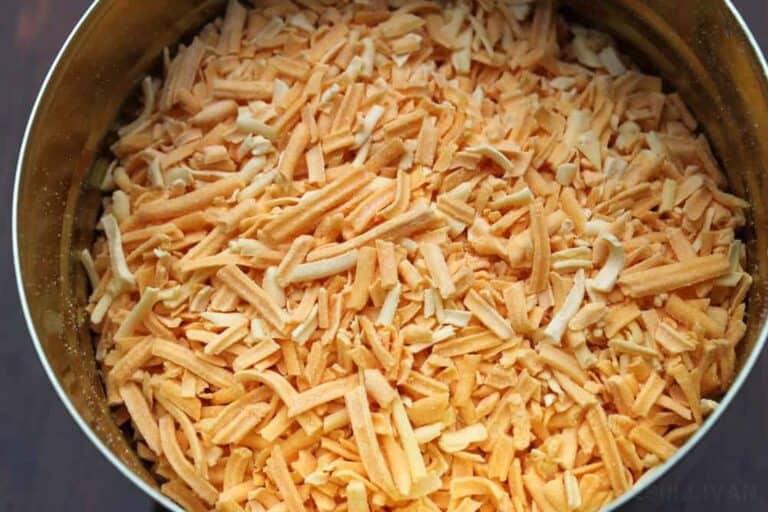
freeze-dried cheese
Long the sole province of industrial-scale preparation, freeze-drying is more accessible to consumers than ever.
These foods can be bought in the form of an easy-to-prepare food kit or made yourself at home with a freeze-dryer appliance.
If looking at kits, several popular brands are sold as emergency food storage supplies, foremost among them being Mountain House, but Readywise is another popular option.
Sold as individual entrees or large, bulk stores in 5-gallon buckets, these can serve to supplement your other foods or act as an ultra-long life reserve for really desperate times.
They also have the advantage of being highly compact, making them a good choice for apartment dwellers or anyone with highly limited space.
Ensure Good Storage Conditions
One of the other critical factors for the long-term storage of food is the conditions in which you keep the food.
Favorable conditions can dramatically extend the shelf life of any food, while conditions that are on the edge of sustainability will radically shorten it.
Of course, you’ll have to make do with what you have but you should take all measures possible to set and control the temperature and humidity at your storage site.
Accordingly, some locations are inherently unfavorable for the long-term storage of food. Your garage is generally a very bad idea, as is a crawl space, an attic, and damp or drafty basements or sheds.
Good locations are areas that are climate controlled and have moderate to low, and stable, humidity. These also tend to be areas that will give you the best chance to protect against pests.
Cool and Dark is a Must
The very best thing you can do for the food you are storing is to keep it cool and in darkness.
Even for foods that don’t have to be refrigerated, cooler temperatures greatly extend shelf life.
Keeping your food under 70°F (21°C) will do wonders, and keeping it between 50° and 60° F(10-15°C) is optimal.
Now, with the right storage techniques and packaging like vacuum ceiling you can still get years out of food that is kept above 70°F (21°C), but just know the warmer and warmer the temperatures get the shorter the shelf life of the food will become.
In temperatures approaching 90°F (32°C) and above, the shelf life of food that would normally last at least a year might be measured in weeks.
Similarly, darkness is your friend when it comes to storing food, and that is why you’re great, great grandparents were so fanatical about keeping their root cellar blacked out.
Light promotes spoilage in various ways, and if it can directly reach food it might lead to the growth or reactivation of bacteria, cause vegetables to sprout, and promote mold, and all sorts of other mayhem.
Direct sunlight and certain artificial light sources also significantly raise the temperature of packaging or food that it strikes.
In short, keep it cool and in the dark and you’ll get the longest life out of your food. Don’t forget to turn off the light when you leave your pantry or store room!
Inspect and Rotate
Whatever kind of food you are storing, it will never be a set it and forget operation. Sorry!
Your stash will always require routine inspection and rotation. Inspection is exactly that, checking over all of your stored items methodically and meticulously to check for “aging out,” problems, spoilage, signs of pests, and the like.
Rotation does not refer to physically turning or moving your food but instead refers to the process of withdrawing and either eating, donating or discarding the food before it goes bad.
Then you replace the items that you took out with new, fresh items that go to the back of the stack so to speak.
By rotating your supplies, you are ensuring that you’ll never be sitting on a small mountain of food that is questionable or hideously spoiled, food that you might have to resort to eating.
Rotation allows you to prevent waste and, essentially, refresh your supply over time.
Use a Spreadsheet or Other Organizer to Track Rotation
You have a small stash composed of items that you eat on a weekly or monthly basis, rotation is easy.
You just grab what you need for a meal, put that item on your list and then nab it once you make your next trip to the grocery store.
Finally, once you come home with it from the store you place those items back on the shelf. Easy!
But if you have a larger supply that is made up of many hundreds or even thousands of items, and a great variety of items to boot, keeping track of all of those purchase dates, storage dates, and probable expiration dates can be an absolute nightmare.
But you have to do it if you want a long-term stash of food.
To help with this endeavor, you’ll need to up your administrative game. Every, single item in your stash should be permanently marked or labeled with the date that you stored it and preferably the actual expiration date.
Note that this is rarely the sell-by or best-buy date marked on the can or package of store-bought food.
You should also have a spreadsheet that tallies how much of everything you have, either by quantity or calories at your preference.
Then you’ll need to regularly inspect and rotate as required. Some people like to do this weekly, some people once a month and some people once a quarter depending on what they are storing.
You might even want to set up a series of electronic reminders on a note-taking app or smart device.
Do whatever makes sense for you that will facilitate the rotation process, but just make sure you do it!
Keep Pests Out
The last thing you’ll need to stay on top of for your long-term stash of food is keeping pests out. This is a proactive process consisting of active and passive measures as required.
The lion’s share of the work will be locating your stash in a suitable place.
If you keep it anywhere that bugs and rodents have an easier time accessing, you’re going to have more problems with pests. The harder it is for these pests to get in, the fewer problems you will have overall. Simple enough.
The next thing you need to do, no matter how clean and tidy the location, is to further protect it against the intrusion of pests.
This means sealing, caulking, and doing all of those other little household chores that are required to keep the bugs, rats, and mice away.
Bugs are itty bitty and persistent, capable of slipping into nearly any place by ways unseen or going the long way around to get to where they need to go.
Rodents are similar but smarter, more direct, and capable of fitting anywhere they can squeeze their skull through.
That takes care of the passive protection, but active protection may be required if you live in an area with high populations of any pest.
Consider the use of traps, poison, and even large-scale depopulation methods to reduce the presence of pests and further decrease the chances that they will get to, much less spoil your food.
Long Term Food Storage is Possible with the Right Procedures
Storing any quantity of food and keeping it fresh, safe and delicious for a long period of time is far more difficult and involved than just sitting on a three-day supply.
You’ll need to be very diligent when it comes to choosing, packaging, and storing the food and you’ll have to be disciplined enough to stay on top of regular inspection and rotation.
But so long as you can do that, and take care to keep pests from getting to your stash, you can have a supply of food you’ll be able to depend on for months or even years.
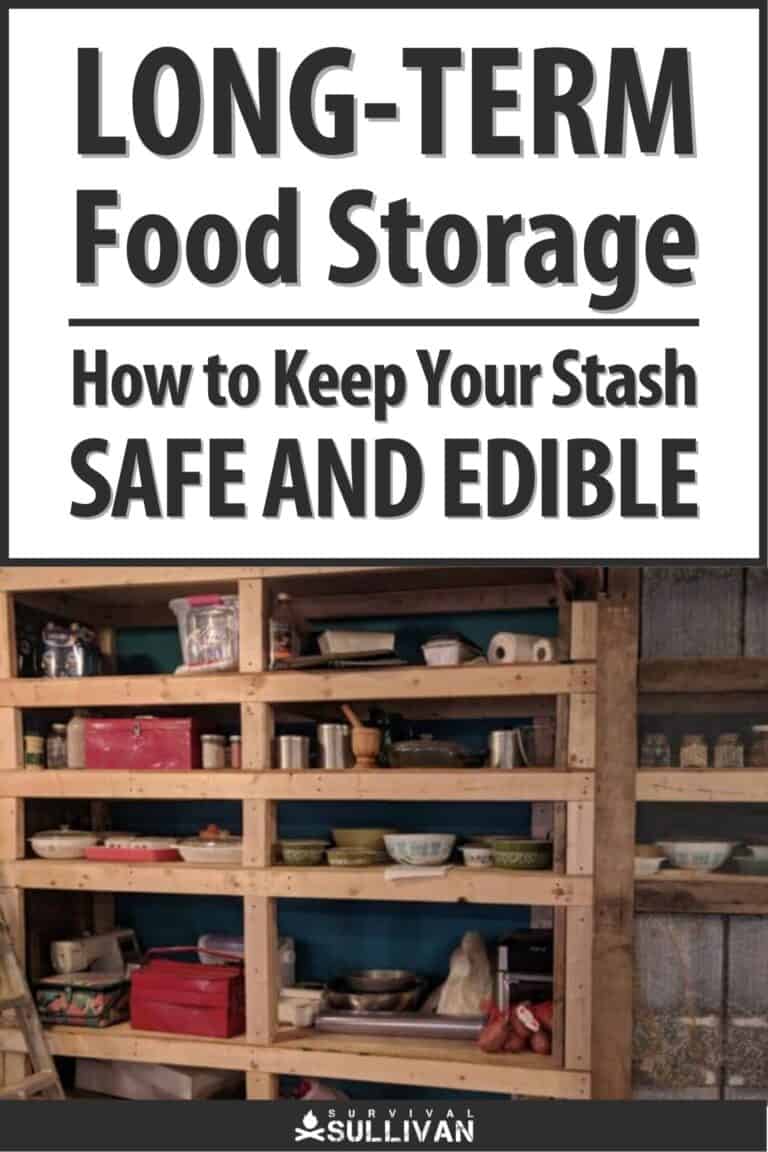
The post Long-Term Food Storage: How to Keep Your Stash Safe and Edible appeared first on Survival Sullivan.
By: Tom Marlowe
Title: Long-Term Food Storage: How to Keep Your Stash Safe and Edible
Sourced From: www.survivalsullivan.com/keeping-stored-food-safe-and-edible/
Published Date: Mon, 02 Jan 2023 16:00:00 +0000
-------------------------------------------------------------------------
Did you miss our previous article...
https://outdoorsnewswire.com/survivalist/pepper-spray-laws-in-arizona
 CampingSurvivalistHuntingFishingExploringHikingPrivacy PolicyTerms And Conditions
CampingSurvivalistHuntingFishingExploringHikingPrivacy PolicyTerms And Conditions
